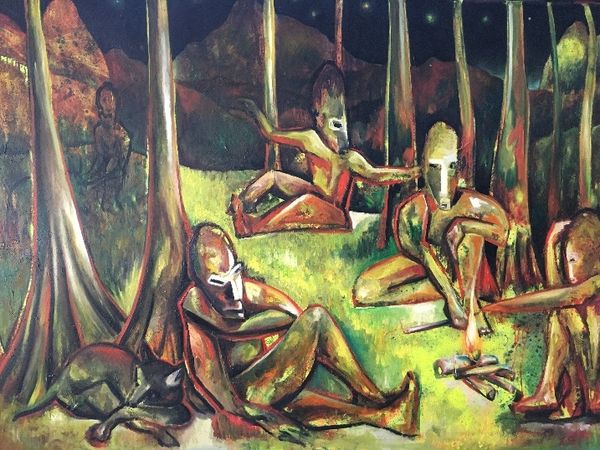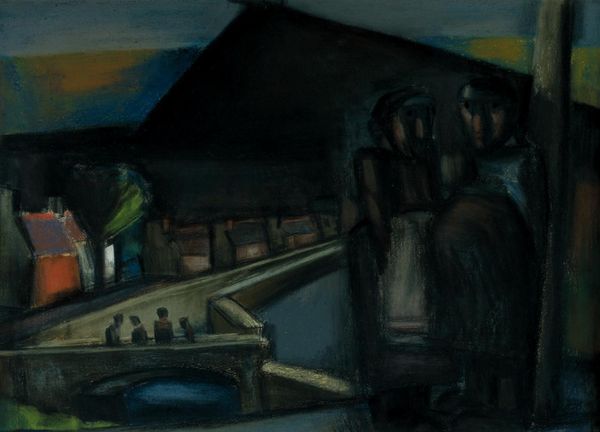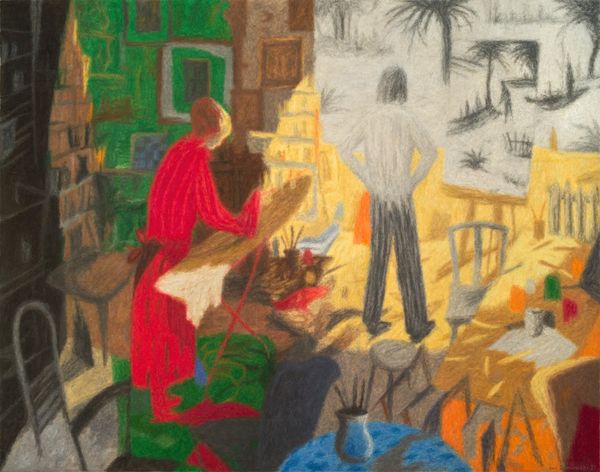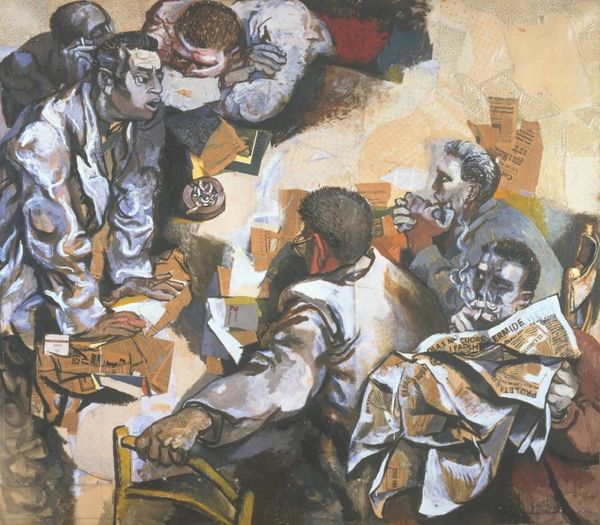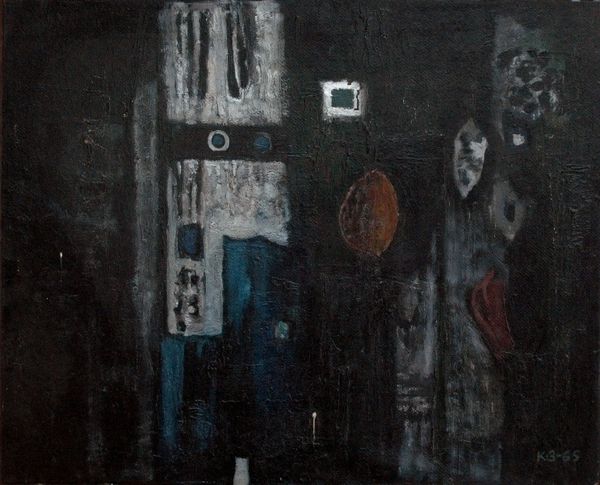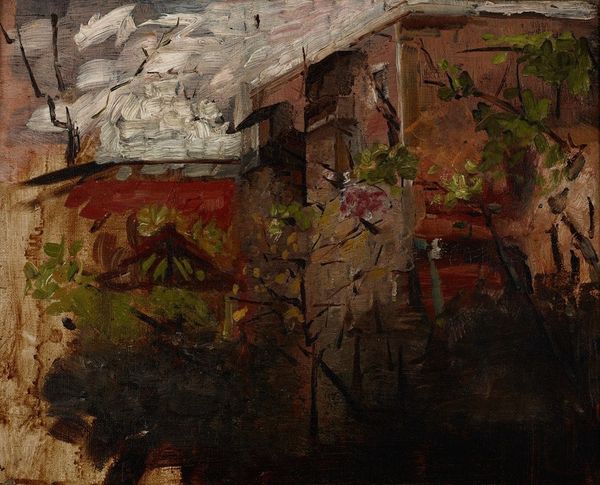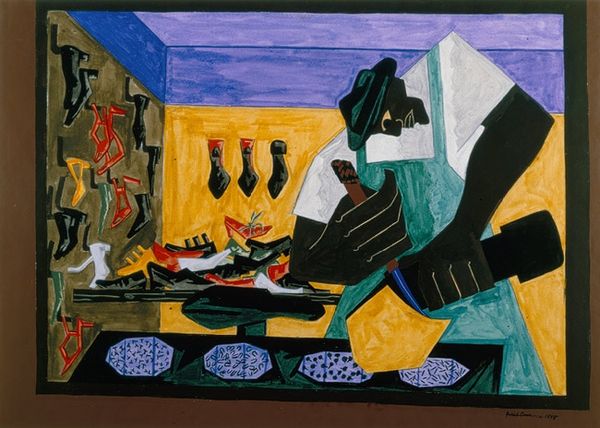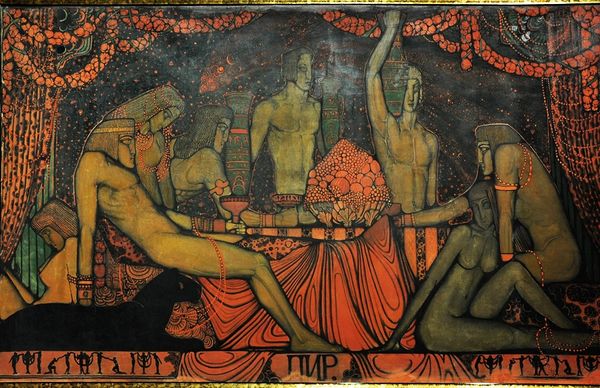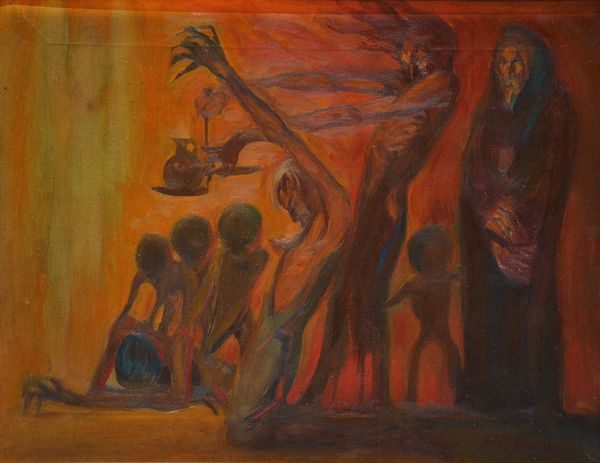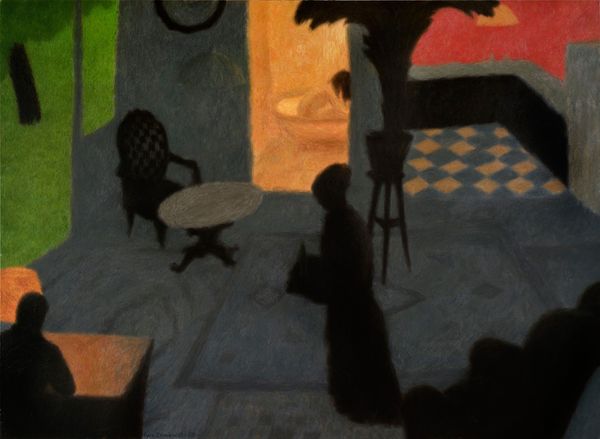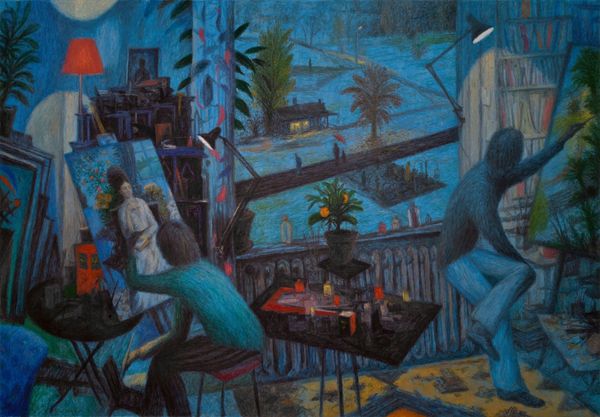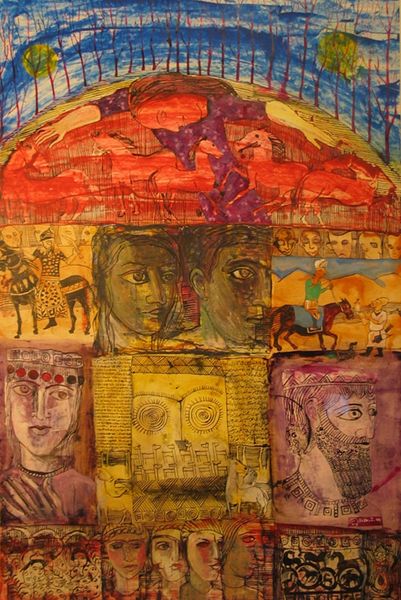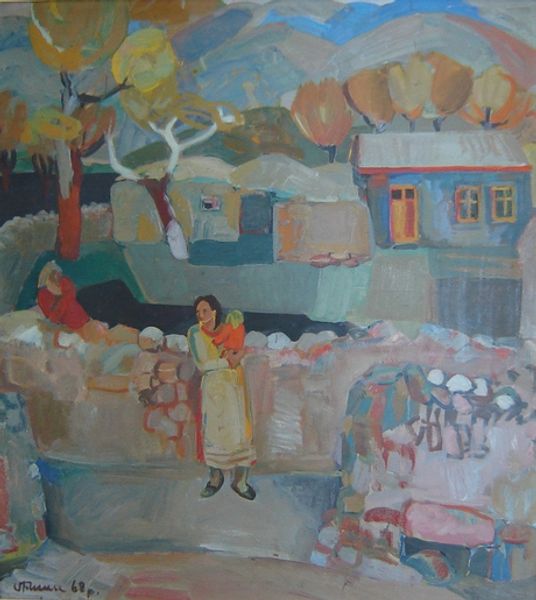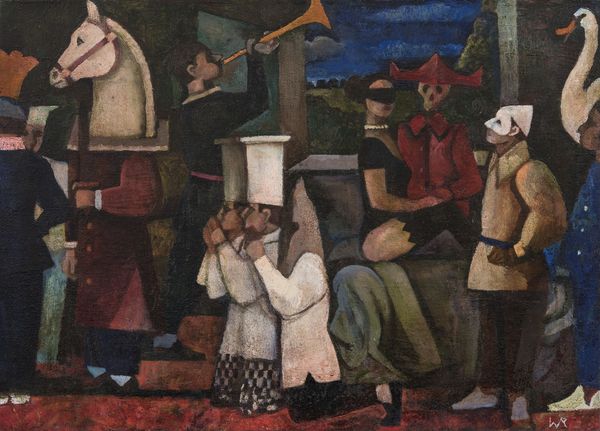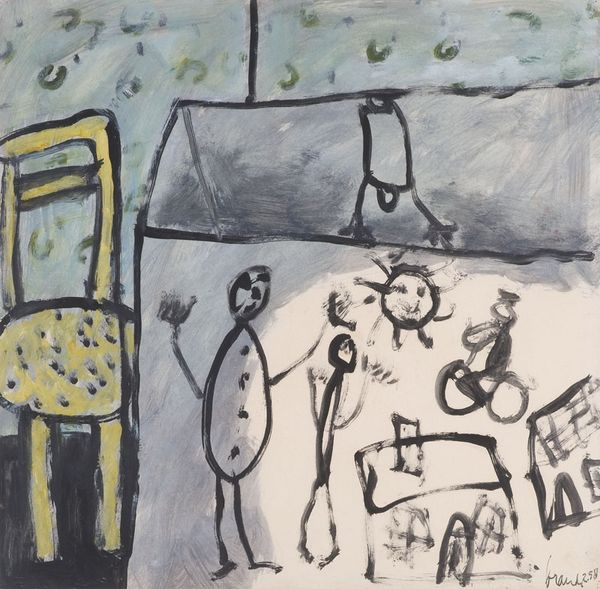
painting, oil-paint
#
portrait
#
painting
#
oil-paint
#
oil painting
#
genre-painting
Copyright: Public domain
Curator: I'm immediately drawn to the composition—it’s almost like a stage set, isn’t it? The figures arranged so deliberately within this shallow space. Editor: Yes, it possesses a strikingly flattened perspective, which seems to amplify its raw energy, it reminds me of some naive art from a century ago. Curator: Indeed. This is "Donkey Bridge (fragment)" by Niko Pirosmani, an oil-on-canvas work of indeterminable date, a key figure in Georgian primitive art. It shows what seems to be a fragment of a bigger genre scene. Editor: Primitive, yes, but notice how skillfully Pirosmani orchestrates the dark palette and strong contrast between the silhouettes of figures and a busy array of bottles on the shelf. It’s as if the figures, arranged seemingly without perspective, have been arranged for us as viewers, ready for decoding of a message. Curator: It speaks to the culture of feasting, where guests, or Kaduris as they're known in Georgian society, expect excellent dining service, represented by the many bottles the taverner has ready on the wall shelves for a steady wine stream. Editor: Absolutely, this resonates so strongly with archetypes of hospitality and communal festivity across many social settings, wouldn't you agree? Curator: Consider how Pirosmani's focus on this, on public and festive scenes as core for his themes, shaped the popular appreciation of folk tradition that followed him. He’s mythologizing, I’d say. Editor: And within that framework of the feast, Pirosmani finds this tension between an idealized depiction of that collective joy and also a sense of loneliness, if that makes sense. A sense of almost a solemn record-keeping... a time capsule! Curator: In some of his biographies, you can tell that those settings also allude to his own sense of self. Some believe he was homeless and an outcast who sought shelter in feasts and celebrations. This may all be mythology and folklore of course. Editor: These formal elements you noted earlier, such as those rigid arrangements, paired with its almost theatrical character— it grants “Donkey Bridge” its lasting evocative power, it keeps luring interpretations and meanings that would otherwise feel anachronic in most contemporary genre-paintings. Curator: It invites us to remember, beyond our critical frameworks, to always be empathetic about historical understanding of artists.
Comments
No comments
Be the first to comment and join the conversation on the ultimate creative platform.
